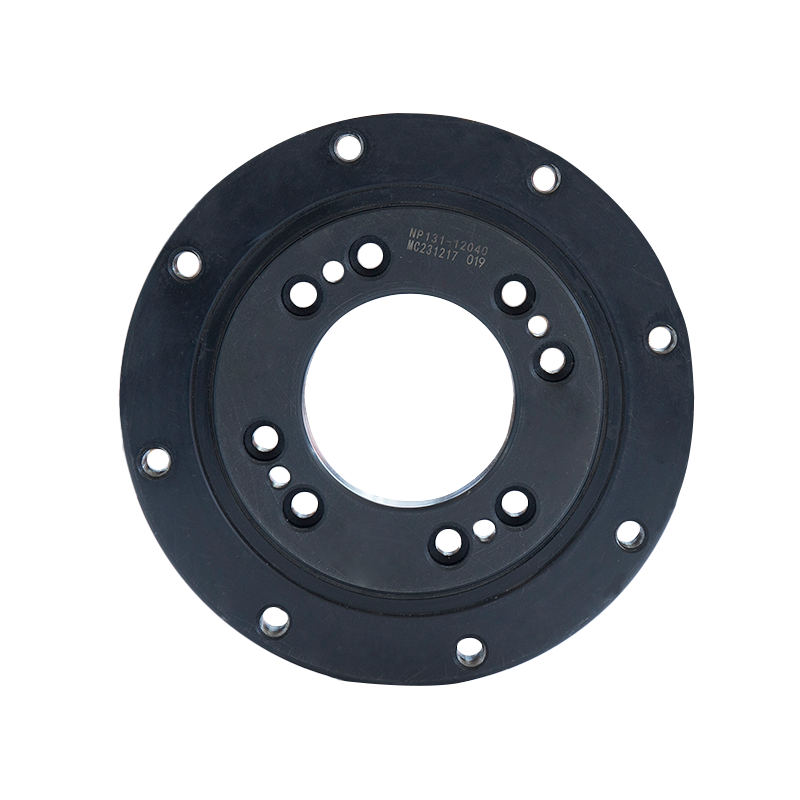How to deal with the sealing and protection issues of SINGLE ROW CROSS-ROLLER SLEWING BEARING in terms of external environmental protection?
 2024.09.06
2024.09.06
 Industry news
Industry news
The external environmental protection issues of single-row Cross-Roller Slewing Bearing are mainly aimed at the environmental challenges such as external pollution, corrosive substances, and extreme temperatures that it faces under different working conditions. Effective external environmental protection can significantly extend the life of the slewing bearing and ensure its normal operation in harsh environments. The following is a detailed approach to external environmental protection:
When the slewing bearing is working, if there is a lot of dust, dirt or moisture in the environment, these contaminants will enter the inside of the bearing and cause wear to the raceways and rollers. Therefore, in dusty or humid environments, appropriate dust and waterproof measures need to be taken.
The double lip seal is used to better block the intrusion of dust and moisture. The lip seal is in close contact with the surface of the slewing bearing through elastic materials to prevent the entry of tiny particles and water.
In working environments with heavy humidity, such as outdoor working machinery and dock equipment, seals with waterproof functions can be used to ensure that the inside of the support remains dry even in heavy rain or humidity. If the environment is extremely harsh and the seal cannot completely block all pollutants, a protective cover or baffle can be installed outside the support to additionally block dust, sand, sewage and other external pollutants.
In chemical plants, marine environments, outdoor equipment and other places that are prone to contact with corrosive substances, it is very important to prevent the slewing arm from suffering corrosion. Corrosion will not only cause increased wear of raceways and rollers, but also affect the overall structural strength of the support.
The surface of the slewing bearing is galvanized to form a corrosion-resistant protective layer to prevent moisture, acidic substances or other corrosive substances from coming into contact with the metal. The corrosion resistance of metal surfaces is enhanced through phosphating treatment, especially in oily and acidic environments. This coating can increase the oxidation resistance of the slewing bearing surface and is suitable for equipment exposed to humid environments for a long time. In particularly harsh marine or chemically corrosive environments, stainless steel materials can be used to manufacture slewing bearings to enhance their corrosion resistance. Stainless steel has good resistance to corrosive environments such as salt spray and acidic gases.
High or low temperature environments may adversely affect the sealing performance and material properties of the slewing bearing, so protective measures need to be adapted to extreme temperature conditions. In high-temperature environments (such as metallurgical equipment or outdoor summer temperatures), seals and lubricants may fail due to overheating. Therefore, the following measures need to be taken:

Use seals made of high-temperature heat-resistant materials (such as fluororubber, silicone rubber) to ensure that the sealing effect will not fail in high-temperature environments. Choose high-temperature resistant grease to prevent the lubricant from evaporating or oxidizing at high temperatures. In extremely high temperature environments, heat sinks can be added to the outside of the support or other cooling devices can be used to reduce the support temperature. In low-temperature environments (such as arctic regions and outdoor operations in winter), the toughness of the material may decrease and the lubricant may become viscous or even fail. Therefore, the following matters need to be paid attention to:
Use low-temperature adaptable seals, such as nitrile rubber (NBR), to maintain elasticity and sealing performance at extremely low temperatures. Use anti-low temperature lubricant to maintain the lubrication effect at low temperatures to ensure the smooth operation of the slewing bearing.
If the slewing bearing works under conditions of large vibration or frequent impact loads (such as construction machinery, mining equipment), additional protective treatment is required. For conditions that are subject to larger impact loads, materials with high toughness and impact resistance can be selected to manufacture key components of the slewing bearing, such as rollers and raceway surfaces. In situations where vibration is strong, you can consider using a shock absorber to reduce the vibration of the equipment from being transmitted to the slewing bearing. At the same time, appropriate lubricant selection can also reduce vibration problems caused by friction to a certain extent.
Even with good sealing and protection designs, regular maintenance and inspection are still essential to ensure the continued reliable operation of slewing bearings in harsh environments. In dusty, watery or corrosive environments, seals are prone to wear or aging. Regularly checking whether the seals are intact is the key to keeping the slewing bearing in good condition. Add or replace lubricant regularly to ensure there is always enough lubricant between the rollers and raceways to reduce friction and wear. In addition, it is recommended to use lubricants that match the environmental conditions (such as anti-corrosion grease, high-temperature resistant grease, etc.).
In extremely harsh environments (such as mud, ice and snow, mining operations), slewing bearings are prone to accumulation of dirt or impurities, leading to seal failure or poor operation. At this time, you can consider designing a self-cleaning system to automatically discharge external dirt during rotation to reduce contaminants from entering the inside of the support.
The focus of external environmental protection for single-row crossed roller slewing bearings is to prevent factors such as dust, moisture, corrosive substances, extreme temperatures, and shock and vibration from affecting the bearing performance. By adopting appropriate sealing design, material protection, surface treatment and regular maintenance, the life of the bearing can be effectively extended and its reliability under various complex working conditions can be improved.












